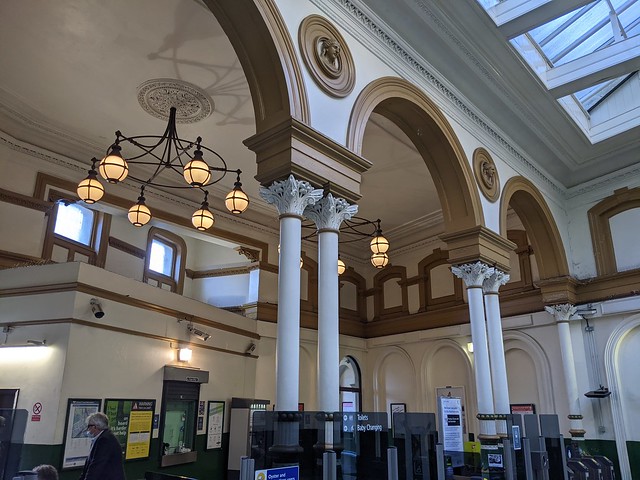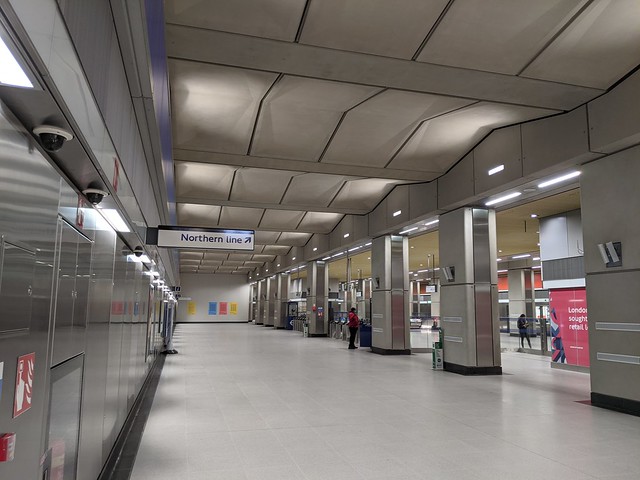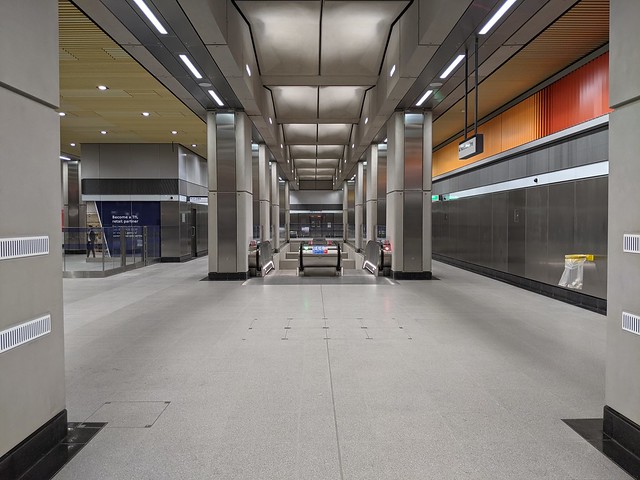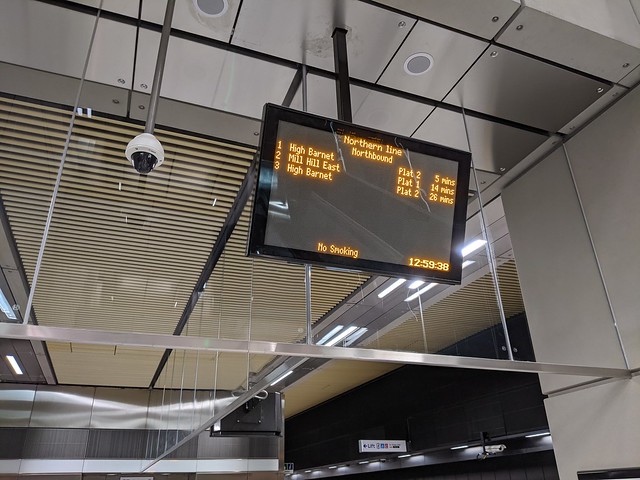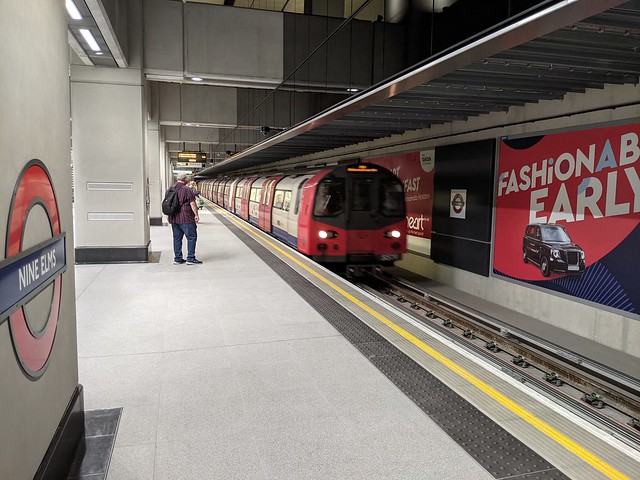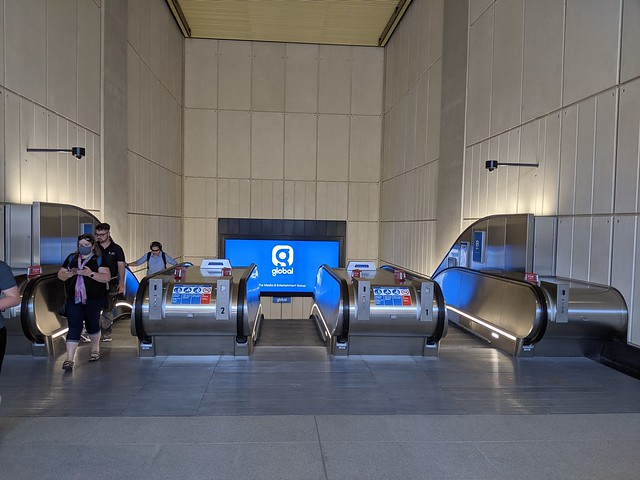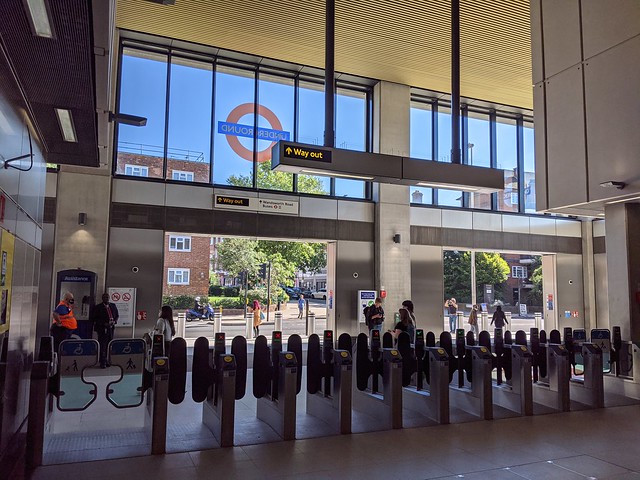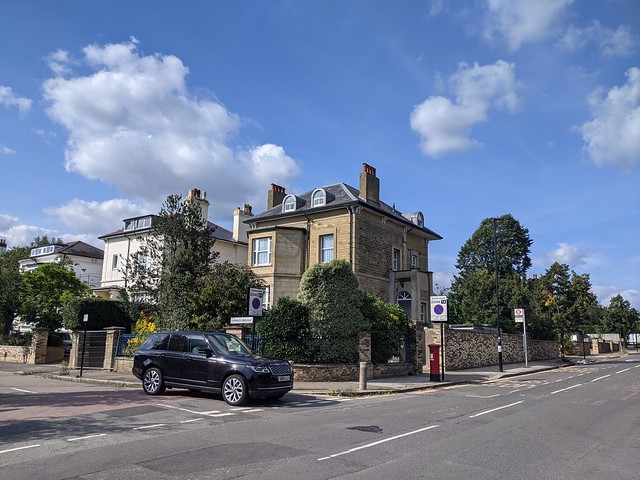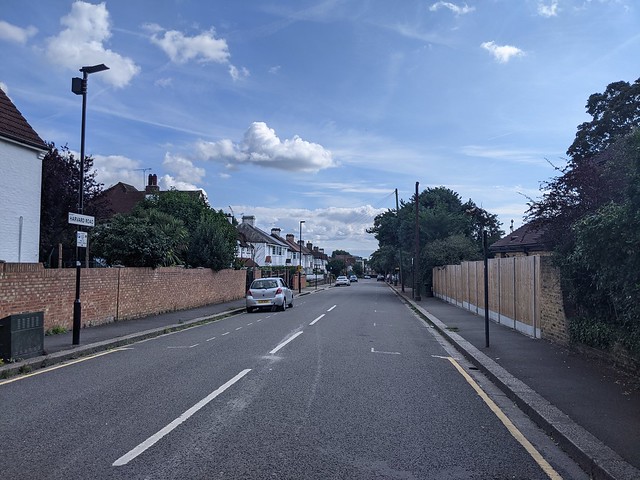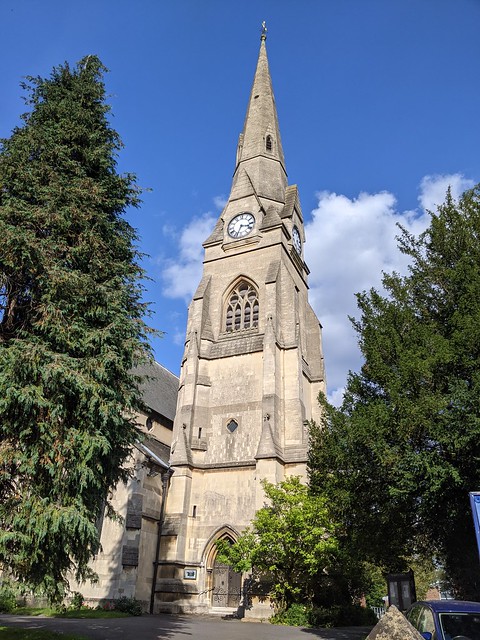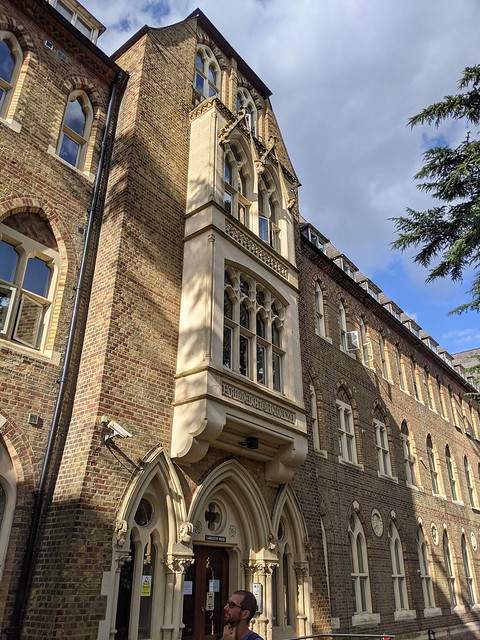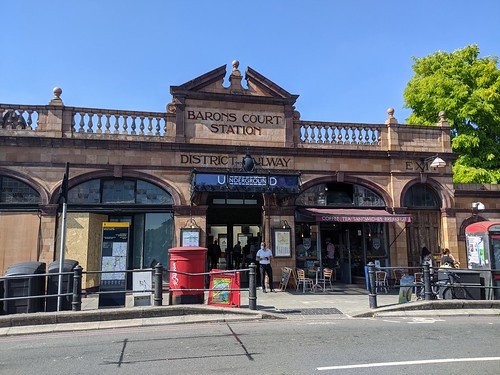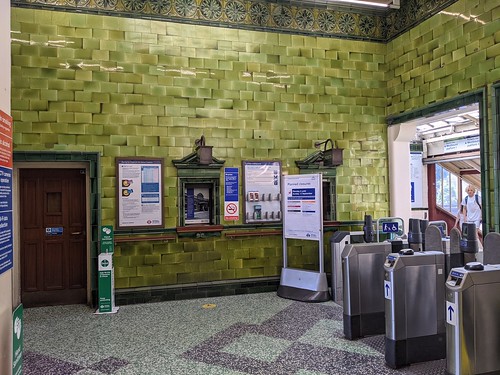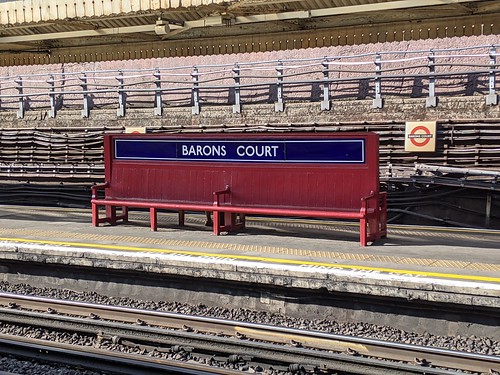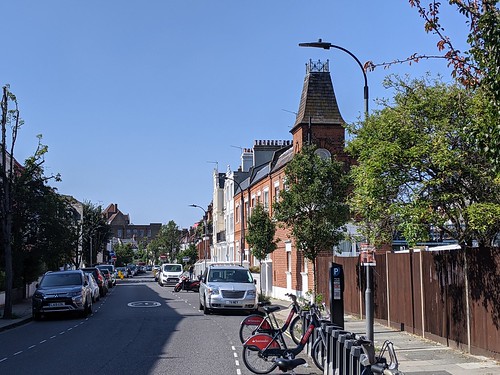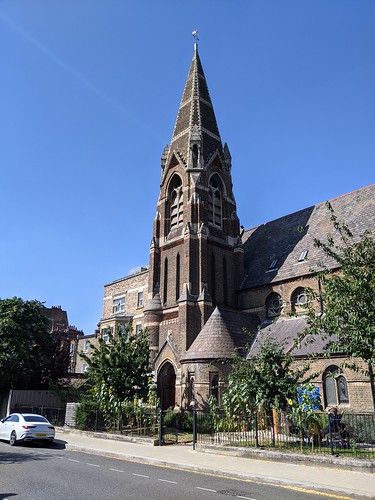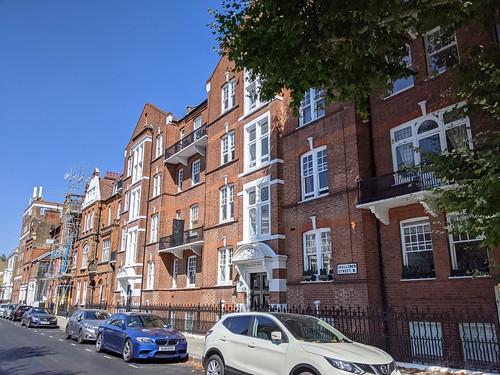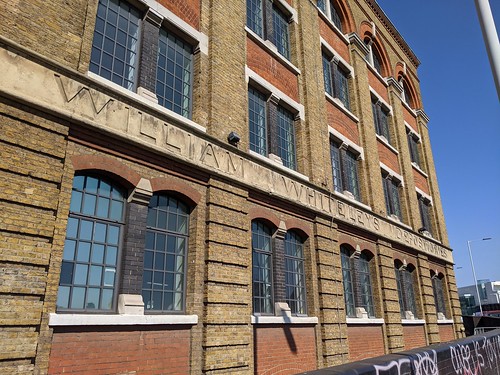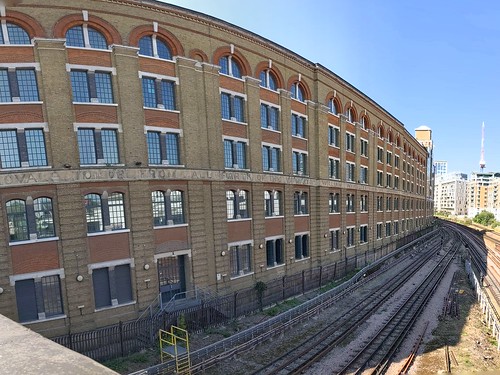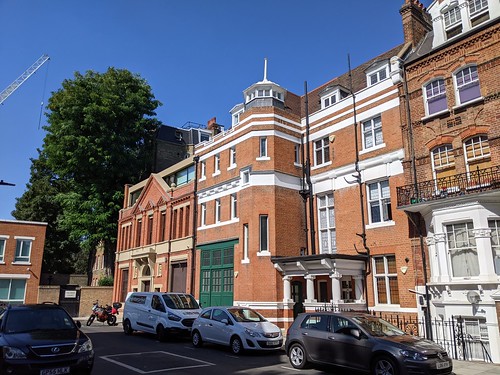24th September
Yes, they’ve been open nearly a week and I’d have liked to have visited Battersea Power Station station and Nine Elms station on the new Northern Line extension on opening day but some of us had to go to work instead :-( Not today though so i got a train up to Battersea Park station, with its unexpectedly impressive ticket hall...
…and then took the short walk up Battersea Park Road to the first of the two shiny new stations, Battersea Power Station station.
Battersea Power Station station.
The entrance almost in the shadow of the eponymous former power station is strikingly modern although rather smaller than I had expected. Maybe it just looks that way because there’s rather a lot of space around it currently waiting to be built on.
Mask on and in I went under the overhanging canopy which was providing pretty much the only shade from the bright sunshine.
There is little to see in the surface building, all the action is down the escalators.
To the first level concourse where the gate line is.
And the two sets of escalators down to platform level. It’s all very open and spacious, reminded me of Canary Wharf or Heathrow stations and I’m sure I’m not alone in that.
At platform level it’s unlike any other Northern Line station I’ve been to - certainly in Zone 1, which for political reasons has been extended to include the new extension. Wouldn’t want the multi-millionaires who’ll be able to afford the Battersea Power Station flats to have to pay an extra few bob to get into town would we now? It was nice to see that some trains will run direct to Mill Hill East, the terminus of the other Northern Line “appendix” on the other side of the capital. One day I’ll come back and do that trip just because but not today as after 5 minutes a train appeared and it was time to go to Nine Elms.
Nine Elms station.
Alighting at Nine Elms again into a huge open space between the platforms but this felt more like an Underground station. Maybe because of the presence of advertisements on the walls facing the platforms, felt to be unnecessary at Battersea because passengers would normally get straight onto a waiting train.
From the platforms three escalators lead up to the surface level ticket hall with more than a hint of Charles Holden’s station designs about it but in 21st century materials. The giant advertising screen above the escalators, to be seen on entering the station rather than leaving it, was still showing Global, the operator’s, logo. Maybe still waiting for a client with deep pockets.
Out of the two new stations I must say that I liked Nine Elms better. For now I expect it’s the more useful of the two and certainly appeared to have more “real” passengers - as opposed to old white men taking pictures :-) It even has a nice roundel in the glass above the entrance which reminded me of Northfields or Morden.
Passing out through the gate line and wide entrance onto Wandsworth Road to look at the outside I’d say that Nine Elms looks more like you expect an Underground station to look than Battersea Power Station station, which without the branding could be a large bus stop, or even a coffee shop :-)
So two new stations which no doubt will be useful and popular, eventually, in an area hitherto ill-served by the Underground. Nine Elms gets my vote as the nicer and not just because when I crossed Wandsworth Road and turned to get a better shot of the exterior it was enhanced by the serendipitous appearance of an older London Transport icon :-)
(On its way to Chelsea Flower Show I think it said on the front.)
